Photo








Bumblebee
https://images.fineartamerica.com/images/artworkimages/mediumlarge/2/bumblebee-on-redbud-flower-trina-ansel.jpg
Eastern Redbud Cercis canadensis
Family:
Fabaceae
Plant Community:
Oak Hickory Forest
Regions:
Native to Eastern and Central North America
Mature Size:
Height: 20′ to 30′
Width: 25′ to 35′
Habitat:
Commonly found as an understory tree in open woodlands and woodland edges. Prefers semi-rich, moist, well-drained soils. Intolerant to wet soils.
Hardiness Zone:
4 to 8
Leaf Color:
Summer - Dull blue/green
Fall - Pale yellow/green
Flowers:
Color - Pink
Bloom - April
Nesting:
Birds:
Cercis canadensis provides suitable nesting habitat for many species of bird.
Mammals:
Cercis canadensis provides suitable coverage for small mammals.
Insects:
Bumblebees use Cercis canadensis for both nesting material and as a host plant for hives.
Henry’s Elfin Butterfly - Adults lay eggs in the center of the holly leaf. Caterpillars eat leaves and buds, and pupate in groups at the base of the host tree.
Sources:
https://www.missouribotanicalgarden.org/PlantFinder/PlantFinderDetails.aspx?kempercode=h550
https://projects.ncsu.edu/goingnative/howto/mapping/nplants/plant_detail.php?id=559
https://www.wildflower.org/plants/result.php?id_plant=ceca4
https://www.fs.fed.us/database/feis/plants/tree/cercan/all.html
https://plants.usda.gov/factsheet/pdf/fs_ceca4.pdf
https://www.arborday.org/trees/treeguide/treedetail.cfm?itemID=912
https://www.butterfliesandmoths.org/species/Callophrys-henrici
0 notes
Photo






Wood Thrush
https://download.ams.birds.cornell.edu/api/v1/asset/170865401/1800
American Hornbeam Carpinus caroliniana
Family:
Betulaceae
Regions:
Native to Eastern North America
Mature Size:
Height: 20′ to 35′
Width: 20′ to 35′
Habitat:
Commonly found as an understory tree along stream edges, in moist woods, and in valleys. Prefers rich, moist soils in part to full shade.
Hardiness Zone:
3 to 9
Leaf Color:
Summer - Dark green
Fall - Yellow/orange/red
Flowers:
Color - White/green
Bloom - February
Nesting:
Birds:
Carpinus caroliniana provides both nesting and cavity nesting sites for several species of bird.
Nesters - Wood Thrush
Cavity Nesters - Black-capped Chickadee, Carolina Chickadee
Mammals:
Carpinus caroliniana is used by beavers in dam construction.
Insects:
Eastern Tiger Swallowtail Butterfly - Adults lay eggs on leaves. Caterpillars eat the leaves and create silken mats on the upper leaf surface to chrysalis over winter.
Red-spotted Purple Butterfly - Adults lay single egg on the host leaf. Caterpillars eat leaves.
Striped Hairstreak Butterfly - Adults lay single eggs on twig. Caterpillars eat buds, leaves, flowers, and fruit.
Sources:
https://www.missouribotanicalgarden.org/PlantFinder/PlantFinderDetails.aspx?kempercode=h540
https://www.wildflower.org/plants/result.php?id_plant=caca18
https://www.butterfliesandmoths.org/species/Papilio-glaucus
https://www.butterfliesandmoths.org/species/Satyrium-liparops
https://www.butterfliesandmoths.org/species/Limenitis-arthemis
https://plants.usda.gov/factsheet/pdf/fs_caca18.pdf
https://plants.ces.ncsu.edu/plants/carpinus-caroliniana/
https://www.fs.fed.us/database/feis/plants/tree/carcar/all.html
https://www.illinoiswildflowers.info/trees/plants/musclewood.html
#larval host#insects#mammals#birds#nests#cavities#caterpillar#butterfly#logs#beaver#eastern tiger swallowtail#red-spotted purple#striped hairstreak#wood thrush#carolina chickadee#black-capped chickadee#chickadee
0 notes
Photo






Cucumbertree Magnolia Magnolia acuminata
Family:
Magnoliaceae
Regions:
Native to Eastern North America
Mature Size:
Height: 40′ to 70′
Width: 20′ to 35′
Habitat:
Commonly found in wooded valleys and along riverbeds. Prefers rich, moist, well-drained loam. Intolerant to overly dry or wet soils and urban pollutants.
Hardiness Zone:
3 to 8
Leaf Color:
Summer - Yellow/green
Fall - Gold
Flowers:
Color - Green/yellow
Bloom - April, May
Nesting:
Birds:
Not a significant nesting habitat for birds.
Mammals:
Generally used as cover for small mammals.
Sources:
http://www.missouribotanicalgarden.org/PlantFinder/PlantFinderDetails.aspx?kempercode=a881
http://dendro.cnre.vt.edu/dendrology/USDAFSSilvics/55.pdf
https://www.cfr.msstate.edu/docs/students/ms_trees.pdf
https://www.srs.fs.usda.gov/pubs/misc/ag_654/volume_2/magnolia/accuminata.htm
https://www.illinoiswildflowers.info/trees/plants/cucumber_tree.html
0 notes
Photo
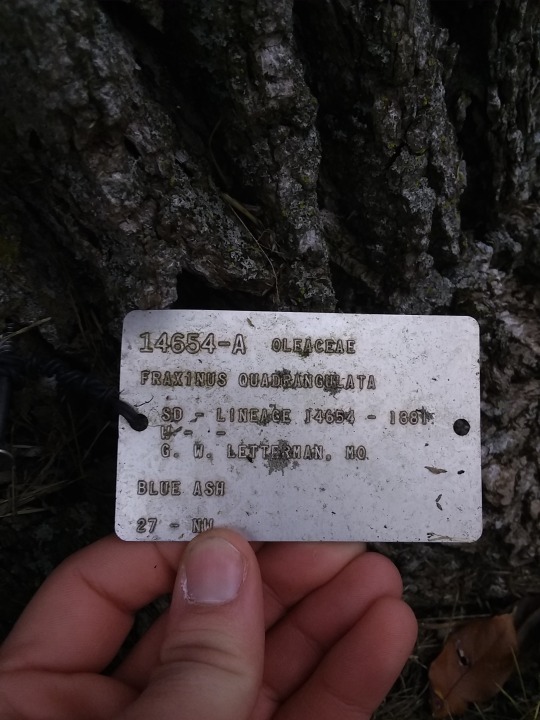
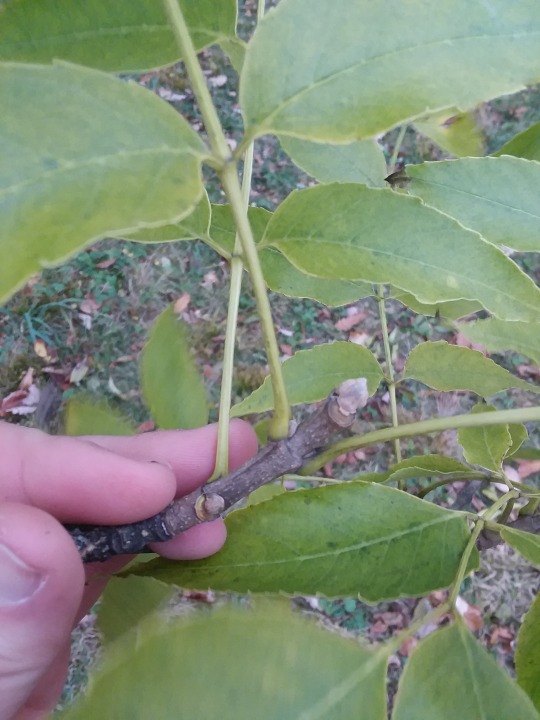

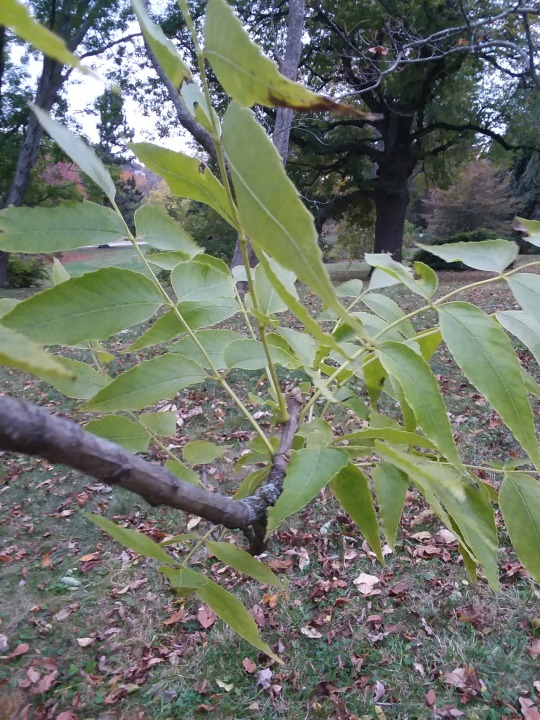
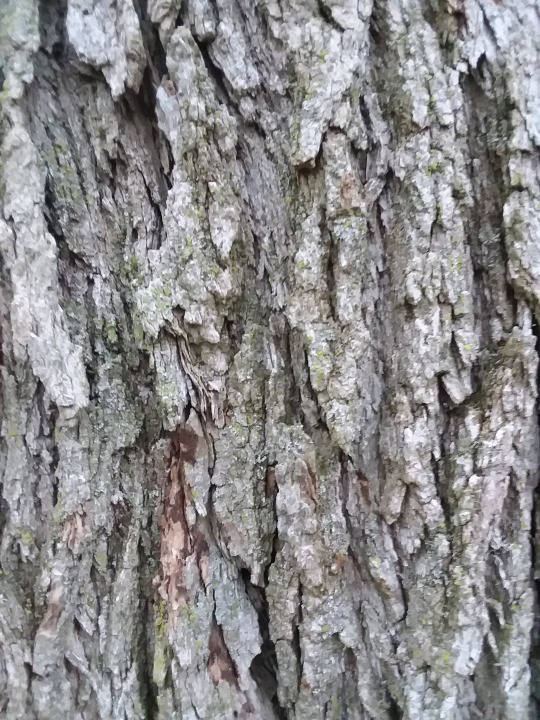
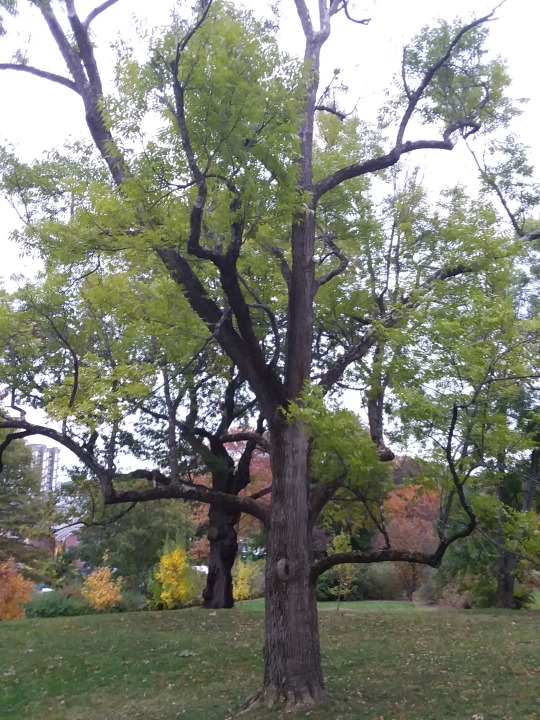
Blue Ash Fraxinus quadrangulata
Family:
Oleaceae
Regions:
Native to Central U.S.
Mature Size:
Height: 50′ to 75′
Width: 35′ to 60′
Habitat:
Commonly found in rocky woodlands. Prefers humusy loam with average moisture in full sun, but very tolerant to dry soils.
Hardiness Zone:
4 to 7
Leaf Color:
Summer - Dark green
Fall - Pale yellow
Flowers:
Color - Purple
Bloom - April, May
Nesting:
Birds:
Fraxinus quadrangulata provides a suitable nesting site for many species of bird that eat its seeds.
Insects:
Fraxinus quadrangulata provides a suitable for a large number of insect species.
Sources:
http://www.missouribotanicalgarden.org/PlantFinder/PlantFinderDetails.aspx?kempercode=a869
https://www.mortonarb.org/trees-plants/tree-plant-descriptions/blue-ash-not-recommended https://www.registrelep-sararegistry.gc.ca/virtual_sara/files/cosewic/sr_Blue%20Ash_2014_e.pdf
0 notes
Photo







Edward’s Hairstreak Butterfly
https://www.naba.org/chapters/nabambc/species-data/Satyrium-edwardsii-photo-1.jpg?ver=0008
White Oak Quercus alba
Family:
Fagaceae
Regions:
Native to Eastern U.S.
Mature Size:
Height: 50′ to 80′
Width: 50′ to 80′
Habitat:
Commonly found on both upland slopes and lowland valleys. Prefers rich, acidic, and moist soils with good drainage in full sun. Tolerant of drought and a wide range of soil conditions.
Hardiness Zone:
3 to 9
Leaf Color:
Summer - Dark green
Fall - Brown/red
Flowers:
Color - Yellow/green
Bloom - May
Nesting:
Birds:
Quercus alba provides a nesting habitat for several species of songbirds.
Mammals:
The long-lasting canopy of Quercus alba provides late fall and winter coverage for small mammals. Large specimens are used by squirrels as den trees.
Insects:
Edwards Hairstreak Butterfly - Adults lay eggs in the bark crevices of young trees. Young caterpillars eat buds during the day, and older caterpillars eat leaves at night, choosing to hide in ants nests at the base of host trees during the day.
Banded Hairstreak Butterfly- Adults lay eggs on twigs. Caterpillars eat leaves and catkins when in bloom.
Gray Hairstreak Butterfly - Adults lay a single egg on the flower. Caterpillars eat the flower.
White M-Hairstreak Butterfly
Horace’s Duskywing Butterfly - Adults lay eggs on new leaf growth. Caterpillars eat host leaves.
Juvenal’s Duskywing Butterfly - Adults lay single eggs on young leaves. Caterpillars eat leaves and lives in nests made out of rolled leaves.
Sources:
https://www.missouribotanicalgarden.org/PlantFinder/PlantFinderDetails.aspx?kempercode=l930
https://www.butterfliesandmoths.org/species/Satyrium-edwardsii
https://www.wildflower.org/plants/result.php?id_plant=QUAL
https://www.fs.fed.us/database/feis/plants/tree/quealb/all.html
https://plants.ces.ncsu.edu/plants/quercus-alba/
https://www.butterfliesandmoths.org/species/Satyrium-calanus
https://www.butterfliesandmoths.org/species/Strymon-melinus
https://www.butterfliesandmoths.org/species/Erynnis-juvenalis
https://www.butterfliesandmoths.org/species/Parrhasius-m-album
https://www.butterfliesandmoths.org/species/Erynnis-horatius
#larval host#insects#mammals#birds#nests#cover#dens#squirrel#butterfly#edwards hairstreak#banded hairstreak#gray hairstreak#white m hairstreak#horace's duskywing#juvenal's duskywing
0 notes
Photo






Laurel Sphinx Moth
https://static.inaturalist.org/photos/49814/large.jpg?1545379473
Mountain Laurel Kalmia latifolia
Family:
Ericaceae
Regions:
Native to Eastern U.S.
Mature Size:
Height: 5′ to 15′
Width: 5′ to 15′
Habitat:
Commonly found in rocky or sandy woods, along slopes, and at woodland edges. Prefers rich, moist, acidic, well-drained humus in part shade. Grows best in cooler climates. Intolerant to heavy clay soils.
Hardiness Zone:
4 to 9
Leaf Color:
Dark green, glossy, leathery evergreen leaves. Light green on undersides.
Flowers:
Color - White and pink/purple
Bloom - May
Nesting:
Mammals:
Kalmia latifolia provides winter cover for mammals.
Black Bears make dens in thickets of Kalmia latifolia.
Insects:
Laurel Sphinx Moth - Caterpillars pupate in the soil under the plant.
Sources:
http://www.missouribotanicalgarden.org/PlantFinder/PlantFinderDetails.aspx?kempercode=c798
https://www.wildflower.org/plants/result.php?id_plant=KALA
https://www.butterfliesandmoths.org/species/Sphinx-kalmiae
https://www.fs.fed.us/database/feis/plants/shrub/kallat/all.html
https://plants.ces.ncsu.edu/plants/kalmia-latifolia/
0 notes
Photo






Baltimore Oriole
https://www.allaboutbirds.org/guide/assets/og/75258971-1200px.jpg
Silver Maple Acer Saccharinum
Family:
Sapindaceae
Plant Community:
Spontaneous Urban Growth
Regions:
Native to Eastern North America
Mature Size:
Height: 50′ to 80′
Width: 35′ to 70′
Habitat:
Commonly found in floodplains, along riverbeds, and in low woods. Often grows in wet, poorly-drained soils. Prefers moist soils. Tolerant to some dry environments.
Hardiness Zone:
3 to 9
Leaf Color:
Summer - Light green, silver undersides
Fall - Green
Flowers:
Color - Green/yellow
Bloom - March
Nesting:
Birds:
Acer Saccharinum provides both nesting and roosting habitats for birds. Cavities form commonly in trunks and branches, providing habitats for cavity nesters.
Nesters - Waterbirds, Wood Duck, Goldeneye, Baltimore Oriole
Cavity Nesters - Owls, Woodpeckers
Roosters - Red-Winged Blackbird, Common Grackle, Starling, Brown-Headed Cowbird
Mammals:
Cavities form commonly in trunks and branches, providing habitats for cavity nesting mammals.
Cavity Nesters - Raccoons, Opossums, Squirrels
Insects:
Cecropia Silk Moth - Adults lay rows of 2-6 eggs on both sides of the host leaf. Young caterpillars feed in groups, then cocoon in dark protected areas under twigs.
Sources:
http://www.missouribotanicalgarden.org/PlantFinder/PlantFinderDetails.aspx?taxonid=275381
https://www.wildflower.org/plants/result.php?id_plant=acsa2
https://www.butterfliesandmoths.org/species/Hyalophora-cecropia
https://plants.usda.gov/plantguide/pdf/pg_acsa2.pdf
https://plants.usda.gov/factsheet/pdf/fs_acsa2.pdf
https://www.fs.fed.us/database/feis/plants/tree/acesah/all.html
#larval host#insects#mammals#birds#nests#cavities#roost#caterpillar#moth#woodpecker#owl#squirrel#waterbirds#Wood Duck#goldeneye#Baltimore Oriole#red-winged blackbird#common grackle#starling#brown-headed cowbird#raccoon#opossum#cecropia silk
0 notes
Photo




Creeping Wintergreen Gaultheria procumbens
Family:
Ericaceae
Plant Community:
Red Maple Swamp
Regions:
Native to Eastern North America
Mature Size:
Height: 3″ to 6″
Habitat:
Found commonly as ground cover in woodlands within its native range. Prefers rich, moist, acidic, and well-drained soils in part or full shade. Grows best in climates with cool summers.
Hardiness Zone:
3 to 8
Leaf Color:
Summer - Glossy, evergreen
Fall - Red/green
Flowers:
Color - White
Bloom - June, July
Nesting:
Although Gaultheria procumbens provides a year round food source for wildlife, it does not provide significant habitats because of its small size. It can provide some cover to small wildlife.
Sources:
http://www.missouribotanicalgarden.org/PlantFinder/PlantFinderDetails.aspx?kempercode=b718
https://www.fs.fed.us/database/feis/plants/shrub/gaupro/all.html
https://wildadirondacks.org/adirondack-wildflowers-wintergreen-gaultheria-procumbens.html
https://extension.unh.edu/resource/recommended-flowering-plants-and-groundcovers-wildlife-0
0 notes
Photo



Woolly Beachheather Hudsonia Tomentosa
Family:
Cistaceae
Plant Community:
New England Barrier Beach
Regions:
Native to Eastern Canada and Northeastern U.S.
Mature Size:
Height: 3″ to 8″
Habitat:
Commonly found on sand dunes and sandy pine woods within its native range. Prefers sandy, course, dryer, soils. Found in back-dune soils. Adaptable to poor soils.
Hardiness Zone:
6 to 7
Leaf Color:
Pale green, scaley with white hairs
Flowers:
Color - Yellow
Bloom - May, June
Nesting:
Although Hudsonia Tomentosa provides a year round food source for wildlife, it does not provide significant habitats because of its small size. It is important to the habitats of species dwelling on beach dunes because it helps develop and keep the dune together.
Sources:
https://plants.usda.gov/factsheet/pdf/fs_huto.pdf
https://plants.usda.gov/java/charProfile?symbol=HUTO
https://www.wildflower.org/plants/result.php?id_plant=HUTO
https://gobotany.nativeplanttrust.org/species/hudsonia/tomentosa/
http://njseagrant.org/wp-content/uploads/2016/05/Dune-Ecology-Secondary-Dunes-and-Beyond.pdf
http://cels.uri.edu/docslink/ceoc/NPS_booklet.pdf
https://garden.org/plants/view/82538/Beach-Heath-Hudsonia-tomentosa/
0 notes
Photo






Screech Owl
https://www.allaboutbirds.org/guide/assets/photo/60389681-480px.jpg
Sugar Maple Acer saccharum
Family:
Sapindaceae
Plant Community:
Northern Hardwood Forest
Regions:
Native to Eastern North America
Mature Size:
Height: 40′ to 80′
Width: 30′ to 60′
Habitat:
Commonly found in hardwood forests. Prefers rich, moist, and slightly acidic soils in full sun. Intolerant of compacted soils without adequate drainage. Intolerant of urban pollution and conditions.
Hardiness Zone:
3 to 8
Leaf Color:
Summer - Green
Fall - Yellow/Orange
Flowers:
Color - Green
Bloom - April
Nesting:
Birds:
Acer saccharum provides habitats for both nesting and cavity nesting birds.
Nesters - Songbirds
Cavity Nesters - Black-Capped Chickadee, Common Flicker, Pileated Woodpecker, Screech Owl
Sources:
http://www.missouribotanicalgarden.org/PlantFinder/PlantFinderDetails.aspx?kempercode=h240
https://plants.usda.gov/plantguide/pdf/pg_acsa3.pdf
https://www.fs.fed.us/database/feis/plants/tree/acesac/all.html
#birds#nests#cavities#woodpecker#owl#chickadee#black-capped chickadee#common flicker#pileated woodpecker#screech owl
0 notes
Photo






Yellow-Throared Warbler
https://www.allaboutbirds.org/guide/assets/photo/64894611-480px.jpg
Whitecedar Falsecypress Chamaecyparis thyoides
Family:
Cupressaceae
Regions:
Native to Eastern U.S.
Mature Size:
Height: 30′ to 50′
Width: 30′ to 40′
Habitat:
Commonly found in swamps, bogs, and wet woods. Prefers rich, moist, sandy and peaty soils in full sun. Can tolerate very wet soils.
Hardiness Zone:
4 to 8
Leaf Color:
Blue-Green evergreen scales
Flowers:
None
Nesting:
Birds:
Chamaecyparis thyoides provides habitats for both nesting and cavity nesting birds.
Nesters - Yellow-throated Warbler, Prarie Warbler, Hooded Warbler
Cavity Nesters - Pileated Woodpecker
Mammals:
Black Bears use trees as territorial marking posts.
Sources:
http://www.missouribotanicalgarden.org/PlantFinder/PlantFinderDetails.aspx?taxonid=279609
https://www.fs.fed.us/database/feis/plants/tree/chathy/all.html
#birds#mammals#nests#cavities#woodpecker#warbler#bear#black bear#yellow-throated warbler#prarie warbler#hooded warbler#pileated woodpecker
0 notes
Photo






Hummingbird Clearwing Moth
https://www.butterfliesandmoths.org/sites/default/files/bamona_images/Hemaris_thysbe-DannyBales-2.jpg
Trumpet Honeysuckle Lonicera sempervirens
Family:
Caprifoliaceae
Regions:
Native to Southeastern U.S.
Mature Size:
Height: 8′ to 15′
Width: 3′ to 6′
Habitat:
Commonly found in thickets and edge communities. Prefers rich, humusy soils with good drainage in full sun.
Hardiness Zone:
4 to 9
Leaf Color:
Blue/Green, evergreen within its native climate
Flowers:
Color - Scarlet/orange/yellow
Bloom - May, June
Nesting:
Insects:
Lonicera sempervirens is a larval host for over 33 species of butterfly and moth.
Spring Azure Butterfly - Adults lay eggs on flower buds. Caterpillars feed on flowers.
Hummungbird Clearwing Moth - Caterpillars cocoon in the soil surface under the plant. Adults drink flower nectar.
Snowberry Clearwing Moth - Caterpillars pupate in cocoons in the leaf litter. Adults drink flower nectar.
Sources:
http://www.missouribotanicalgarden.org/PlantFinder/PlantFinderDetails.aspx?kempercode=d990
https://www.butterfliesandmoths.org/species/Hemaris-diffinis
https://www.butterfliesandmoths.org/species/Celastrina-ladon
https://www.butterfliesandmoths.org/species/Hemaris-thysbe
https://www.wildflower.org/plants/result.php?id_plant=lose
http://backyardsfornature.org/?p=1822
#larval host#insects#butterfly#moth#caterpillar#spring azure#hummingbird clearwing#snowberry clearwing
0 notes
Photo






Prairie Warbler
https://www.allaboutbirds.org/guide/assets/photo/64895071-480px.jpg
Shellbark Hickory Carya laciniosa
Family:
Juglandaceae
Regions:
Native to Eastern & Central North America
Mature Size:
Height: 60′ to 80′
Width: 40′ to 60′
Habitat:
Commonly found in low woods and along river banks. Prefers rich, humusy, and moist soils. Tolerant to areas that experience partial flooding.
Hardiness Zone:
5 to 8
Leaf Color:
Summer - Dark green leaflets
Fall - Gold/brown
Flowers:
Color - Yellow/green catkins
Bloom - April, May
Nesting:
Birds:
Nesters - Prarie Warbler
Mammals:
Cavity Nesters - Tree Squirrels
Roosters - Indiana Bat (bark)
Insects:
Carya laciniosa provides habitats for many different insect species within its bark.
Sources:
http://www.missouribotanicalgarden.org/PlantFinder/PlantFinderDetails.aspx?kempercode=a853
https://www.illinoiswildflowers.info/trees/plants/kn_hickory.htm
0 notes
Photo





European White Birch Betula pendula
Family:
Betulaceae
Regions:
Native to Europe and Asia. Brought to North America as an ornamental tree. Widely planted in Northern U.S.
Mature Size:
Height: 30′ to 40′
Width: 15′ to 30′
Habitat:
In its native habitat, commonly found at the margins of woodlands and on hills and slopes. Prefers moist, sandy or rocky, well-drained loam in full sun. Intolerant to hot summer temperatures.
Hardiness Zone:
2 to 6
Leaf Color:
Summer - Green, glossy
Fall - Green/yellow
Flowers:
Color - Yellow/brown/green catkins
Bloom - March, April
Nesting:
Birds:
Betula pendula provides cavity nesting habitats for woodpeckers and other hole-nesting birds.
Sources:
http://www.missouribotanicalgarden.org/PlantFinder/PlantFinderDetails.aspx?taxonid=277818
https://www.woodlandtrust.org.uk/trees-woods-and-wildlife/british-trees/a-z-of-british-trees/silver-birch/
0 notes
Photo








Carolina Chickadee
https://www.allaboutbirds.org/guide/assets/photo/68055171-480px.jpg
Carolina Silverbell Halesia tetraptera
Family:
Styracaceae
Regions:
Native to Southeast U.S.
Mature Size:
Height: 30′ to 40′
Width: 20′ to 35′
Habitat:
Commonly found in the understory of forests in its native region. Prefers rich, acidic, moist soils in part shade. Typically does not exceed 35′ and can be shrubby in nature.
Hardiness Zone:
4 to 8
Leaf Color:
Summer - Dark yellow/green, dull
Fall - Yellow
Flowers:
Color - White, dropping, bell-shaped
Bloom - April
Nesting:
Birds:
Dead snags of Halesia tetraptera provides habitat for the cavity nesting Carolina Chickadee.
Mammals:
Squirrels use Halesia tetraptera as a den tree.
Insects:
Eastern Tiger Swallowtail Butterfly - Adults lay eggs on leaves. Caterpillars eat the leaves and create silken mats on the upper leaf surface to chrysalis over winter.
Mourning Cloak Butterfly - Adults lay eggs in a ring around twigs. Caterpillars live in group webs and eat young leaves.
Eastern Comma Butterfly - Adults lay eggs on underside of leaves or stems. Caterpillars pull leaf edges together for shelter.
Red-spotted Purple Butterfly - Adults lay single egg on the host leaf. Caterpillars eat leaves.
Viceroy Butterfly - Adults lay eggs on the tip of leaves. Caterpillars eat leaves and catkins and take shelter in rolled leaf tips. Caterpillars also hang balls of web, dung, and leaves off of leaves to distract predators.
Sources:
http://www.missouribotanicalgarden.org/PlantFinder/PlantFinderDetails.aspx?kempercode=a440
https://plants.ces.ncsu.edu/plants/halesia-carolina/ https://www.srs.fs.usda.gov/pubs/misc/ag_654/volume_2/halesia/carolina.htm https://www.illinoiswildflowers.info/trees/plants/car_silverbell.html https://www.butterfliesandmoths.org/species/Papilio-glaucus https://www.butterfliesandmoths.org/species/Nymphalis-antiopa https://www.butterfliesandmoths.org/species/Polygonia-comma https://www.butterfliesandmoths.org/species/Limenitis-arthemis https://www.butterfliesandmoths.org/species/Limenitis-archippus
#larval host#insects#mammals#birds#cavities#dens#butterfly#caterpillar#snags#chickadee#carolina chickadee#eastern tiger swallowtail#mourning cloak#eastern comma#red-spotted purple#viceroy
0 notes
Photo






Osage Orange Sphinx Moth
https://nature.mdc.mo.gov/sites/default/files/styles/centered_full/public/media/field-guide/Hagens_Osage_Orange_Sphinx_8-17-19.jpg?itok=wk1x_atI
Osage Orange Maclura pomifera
Family:
Moraceae
Regions:
Native to Southern, Central/Eastern U.S.
Mature Size:
Height: 35′ to 60′
Width: 35′ to 60′
Habitat:
Commonly found in bottom-lands and river valleys. Prefers average, medium moisture soils. Tolerant to many different soil types; dry, wet, poor soils, heat, and drought.
Hardiness Zone:
4 to 9
Leaf Color:
Summer - Dark green, shiny
Fall - Yellow
Flowers:
Color - Green
Bloom - June
Nesting:
Birds:
Maclura pomifera provides nesting and cover habitats for birds.
Nesters - Brown Thrasher, Loggerhead Shrike
Insects:
Osage Orange Sphinx Moth - Caterpillars feed on leaves and buds.
Fruit-Tree Leafroller Moth - Caterpillars feed on leaves and buds.
Sources:
http://www.missouribotanicalgarden.org/PlantFinder/PlantFinderDetails.aspx?kempercode=a879
https://www.fs.fed.us/database/feis/plants/tree/macpom/all.html
https://www.illinoiswildflowers.info/trees/plants/osage_orange.htm
https://www.butterfliesandmoths.org/species/Ceratomia-hageni
https://www.butterfliesandmoths.org/species/Archips-argyrospila
#larval host#insects#birds#cover#nests#brown thrasher#loggerhead shirke#caterpillar#moth#osage orange sphinx#fruit-tree leafroller
0 notes
Photo





Spike Winterhazel Corylopsis spicata
Family:
Hamamelidaceae
Regions:
Native to Japan.
Mature Size:
Height: 4′ to 8′
Width: 6′ to 10′
Habitat:
Prefers medium moisture, acidic, rich soils in part shade. Intolerant to high winds and soils with high levels of clay.
Hardiness Zone:
5 to 8
Leaf Color:
Summer - Purple to blue/green
Fall - Yellow/green
Flowers:
Color - Yellow, red/purple anthers
Bloom - March, April
Nesting:
No significant habitat for native U.S. wildlife.
Sources:
http://www.missouribotanicalgarden.org/PlantFinder/PlantFinderDetails.aspx?taxonid=281037&isprofile=1&gen=Corylopsis
0 notes